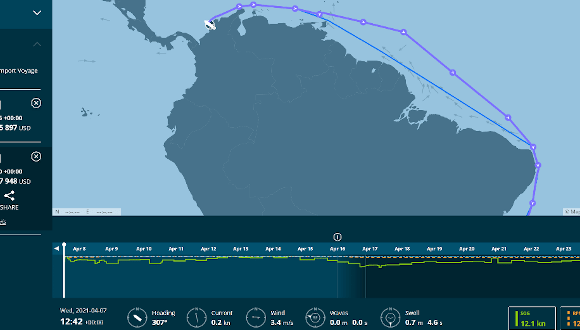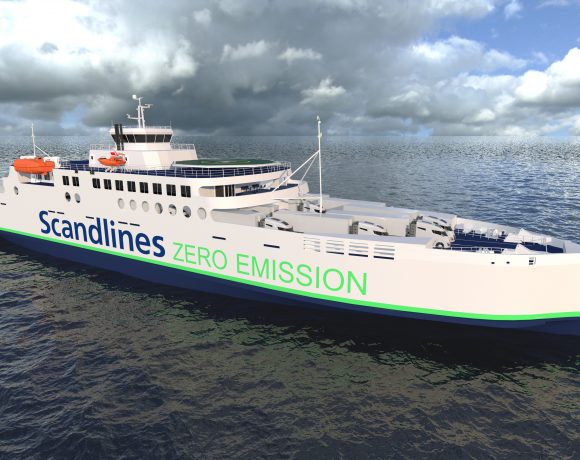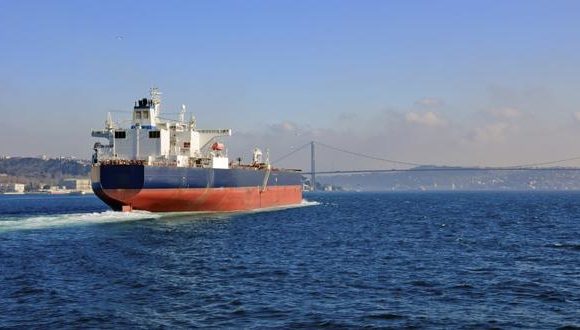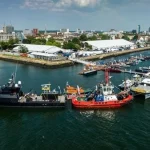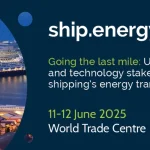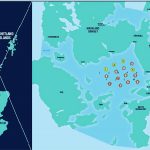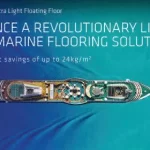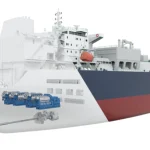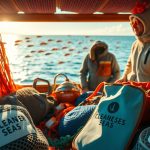Marine Ecology News Digest December 2024
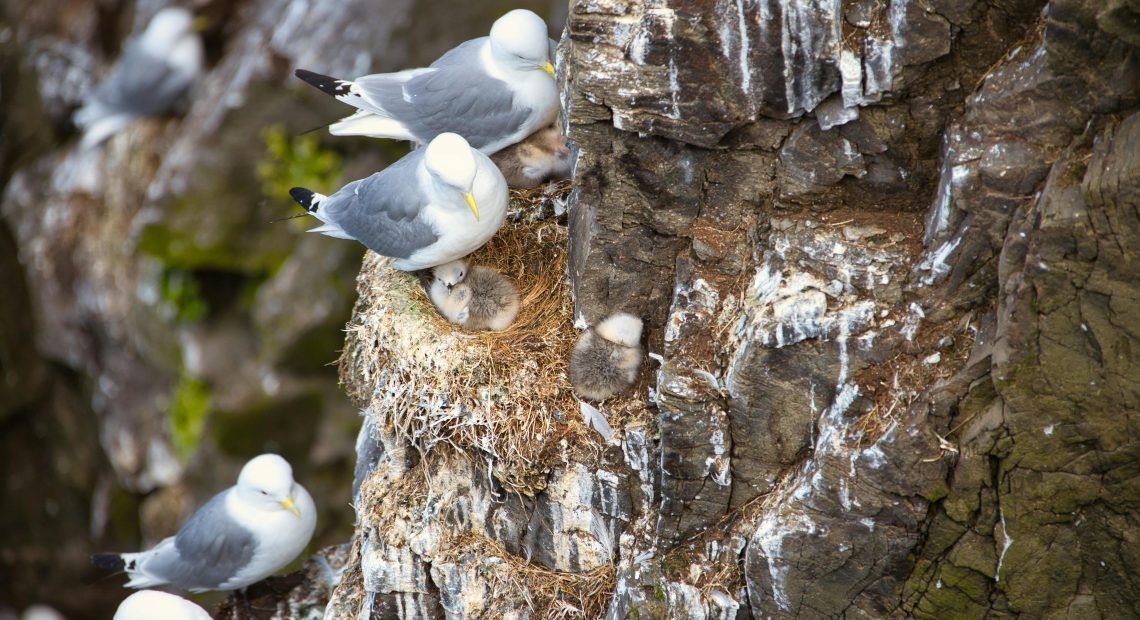
Ever wondered what secrets the ocean holds? December 2024 brings exciting discoveries and important updates for the sea. These are key for those working in the maritime field.
Our Marine Ecology News Digest comes at a critical time for our oceans. We’ve seen amazing finds in biodiversity and worrying climate changes. These need urgent action from those who care about the environment.
This month, we share Marine Biology Updates on new research, changing conservation rules, and tech that helps protect our seas. These updates are from the UK and around the world.
We cover everything from eco-friendly fishing to ways to fight pollution. Our digest is full of the latest news for those in the maritime world. It’s about hope and the need to work together to save our oceans.
Recent Advances in Marine Conservation Efforts
2024 has seen big steps forward in protecting our oceans. New policies, community projects, and tech innovations are leading the way. This teamwork between governments, communities, and tech experts is making our oceans safer for the future.
New Policies to Protect Coastal Ecosystems
Recently, new rules have been made to save our coastal ecosystems. These rules are stricter and aim to protect places like mangroves and estuaries.
The UK is leading with its Coastal Resilience Act. It protects coastal areas and has harsher penalties for pollution. This change is moving from fixing problems to preventing them.
The United Nations Ocean Treaty is also a big step. It gives legal protection to marine life in most of the ocean. This treaty is a major win for ocean conservation.
- Enhanced buffer zone requirements around sensitive coastal areas
- Stricter environmental impact assessment protocols for coastal development
- Integration of indigenous knowledge into conservation policy frameworks
- New financial mechanisms to fund long-term ecosystem restoration projects
Community Involvement in Marine Protection
Community efforts in marine protection have grown a lot. Local projects are now showing great success in saving ecosystems and species. They often do better than traditional methods.
In the UK, people are helping monitor the coast. The Coastal Guardian Network in Cornwall has over 500 volunteers. They do surveys and report pollution, helping protect the coast.
Locally managed marine areas (LMMAs) are also doing well. These areas are protected by local people and authorities. They help biodiversity and support jobs.
- Community-based monitoring programmes tracking coastal health indicators
- Local knowledge integration into conservation planning processes
- Collaborative restoration projects involving schools and community groups
- Economic incentives for communities adopting sustainable coastal practices
Technology’s Role in Conservation
New tech is changing how we protect the environment. It lets us monitor and protect the ocean better. Advanced tools like satellite monitoring and underwater vehicles are key.
Satellites can now track illegal fishing and coral bleaching in real-time. Underwater vehicles explore deep-sea areas we didn’t know much about. This helps us understand and protect marine life.
Artificial intelligence is also helping. It uses ocean data to predict changes and find areas to protect. The Marine Conservation AI Network gives these tools to groups around the world.
The Ecological Society of America has started a new section for coastal and marine ecology. This is a big step in using new tech for conservation. It brings together students and experts to share ideas and methods.
These advances show a new way to protect our oceans. They mix policy, community work, and tech. This mix is the best way to keep our coastal ecosystems safe for the future.
Impacts of Climate Change on Marine Life
The world’s oceans are changing fast because of climate change. This is affecting marine life in big ways. Research shows these changes are happening quicker than ever before, threatening the balance of marine ecosystems.
Changes in temperature, chemistry, and currents are reshaping our oceans. This is hitting vulnerable species and habitats hard. It’s a global issue with severe effects.
Rising Ocean Temperatures and Species Migration
Ocean temperatures are rising fast, causing marine species to move. Tropical species are moving poleward quickly. This is creating new ecological interactions with uncertain outcomes.
This disruption is affecting food webs and ecosystems. The Great Barrier Reef is a clear example of these changes. It has seen its highest temperatures in over 400 years, leading to mass bleaching.
Fish populations are also changing due to temperature. In the Northern Hemisphere, important species are moving north. In UK waters, cold-water species like cod are moving north, while warm-water species like red mullet are becoming more common.
This creates big challenges for managing fisheries and planning marine conservation.
Acidification and Its Effects on Coral Reefs
Ocean acidification is another big threat to marine ecosystems. As oceans absorb more carbon dioxide, seawater chemistry changes. This makes it hard for organisms to build their structures.
Studies show reef structures are dissolving at alarming rates. Shallow-water reef systems are very vulnerable to these changes. This is causing bleaching and reduced calcification in coral species.
Despite these challenges, some corals are showing resilience. Research is looking into these resilient species to help conservation efforts. This could lead to new ways to protect coral reefs.
Lessons from Recent Studies
Recent research has given us important insights into climate change’s effects on oceans. The global ocean has lost 2% of its oxygen levels in 60 years. This is a big concern for marine life.
NOAA Fisheries says climate change is making it harder to protect endangered marine species. For example, Atlantic salmon in the Gulf of Maine are facing habitat changes due to warming waters. This is adding to the challenges they already face.
These studies highlight the need for new management approaches. Traditional conservation strategies may not be enough as oceans change fast. We need to focus on building resilience in ecosystems.
The scientific community believes we can make a difference with the right actions. Marine protected areas designed with climate resilience in mind are key. Reducing other stressors and restoring habitats are also important. These efforts need cooperation from all levels of governance and stakeholders.
Highlights from Marine Research Initiatives
Recent marine research has uncovered new species and ecosystems. Scientists have made great strides in studying marine life. They’ve developed new ways to research and understand underwater habitats.
These discoveries help us learn more about the ocean. They also give us important information for saving marine life around the world.
Breakthroughs in Marine Biodiversity Studies
A big project has sped up finding and naming marine species. It brought together 25 experts from ten countries. They worked together to study marine life in different depths.
They found 11 new species, from shallow waters to depths over 7,000 meters. One of the most interesting finds is the wrinkly-shelled limpet (Lepetodrilus marianae). It lives near hot vents, where most life can’t survive.
They also found a special amphipod (Cunicolomaera grata). It builds complex tunnels in the seafloor. These discoveries show how much we don’t know about our oceans.
Each new species teaches us about evolution, ecology, and possible uses in science and medicine. Their unique ways of surviving in harsh environments could lead to new discoveries.
Innovative Approaches in Marine Ecology
Marine ecology is getting a tech boost. Environmental DNA (eDNA) sampling is a new way to find species without harming them. It looks at genetic material in water to see which organisms are there.
Autonomous underwater vehicles (AUVs) are exploring places we couldn’t reach before. They can go deep, collect samples, and record data on their own. This tech is changing how we learn about the ocean.
High-tech cameras and 3D mapping are also changing research. They give us detailed views of the seafloor and how creatures live there. This info helps us understand ecosystems better than ever before.
- Environmental DNA sampling for non-invasive species detection
- Autonomous underwater vehicles for remote exploration
- Advanced imaging and 3D mapping technologies
- Machine learning algorithms for data analysis
- Satellite tracking of marine species movements
Key Findings from the Latest Research
The Nazca Ridge, a mountain range under the sea, has been explored. It’s near Chile and is untouched by humans. There, scientists found at least 20 new species.
One of the most amazing finds is a coral garden as big as three tennis courts. It’s home to many marine creatures. This shows how important it is to protect marine areas like this.
Recent studies have also shown how species interact in ways we didn’t know before. This knowledge helps us create better plans to save marine life. It shows how complex marine ecosystems are.
By combining different research areas, scientists are getting a clearer picture of marine ecosystems. This helps them predict how these systems will change. It’s key for finding and protecting vulnerable species and habitats.
These discoveries show that our oceans are full of mysteries. With more research and new technologies, we’ll find even more. Each discovery helps us understand and protect our oceans better.
Marine Pollution Updates
The fight against marine pollution has seen ups and downs. Researchers have found changes in how our oceans are polluted. Despite more awareness and efforts to protect the environment, our oceans face big challenges.
Monitoring data shows both ongoing threats and new solutions. These come from science and policy efforts.
Plastic Waste and its Global Impact
Plastic pollution is a big problem for our oceans. Despite more efforts, plastic waste keeps building up. This costs the world over £40 billion a year.
This cost affects many areas. It includes:
- Commercial fisheries losing catches and damaging gear
- Tourism seeing less beautiful coasts
- Health systems dealing with contaminated seafood
- Marine habitats getting worse
Recently, we’ve seen better ways to fight plastic waste. Laws banning single-use plastics and making companies responsible for waste have helped. New technologies and biodegradable options are also making a difference.
Changing how people behave has also helped. Clean-ups, awareness campaigns, and education are making a big impact. These efforts are seen in the UK and other places.
Efforts to Tackle Oceanic Oil Spills
2024 has seen big steps forward in dealing with oil spills. New technologies and ways to clean up spills have improved. This means we can handle oil spills better.
New systems can catch and clean up oil spills. Special microbes can also break down oil without harming the environment.
Recent spills show both challenges and progress. The North Sea spill in 2024 showed better international cooperation. New agreements help share information and resources.
Models now predict oil spills better. They use ocean data, weather, and oil type to plan clean-up efforts.
The Role of Microplastics in Marine Ecosystems
Research on microplastics is worrying. They’re found everywhere in the ocean. This means no part of the ocean is safe from pollution.
Studies show toxins from microplastics can build up in food chains. This happens when:
- Microplastics soak up toxins from the water
- Small animals eat these particles
- Predators eat many contaminated prey, increasing toxin levels
- Top predators, like fish, have the most toxins
This affects both the ocean and our health. It raises questions about seafood safety and the ocean’s future. To understand this better, we’re improving how we track microplastics.
These improvements help target pollution better. For example, better filters at wastewater plants catch microplastics. Also, new fabrics release fewer microfibres when washed.
Science is getting better at finding and measuring microplastics. This helps make policies to protect the environment more effective.
Profiles of Key Species Under Threat
Recent updates in marine biology show many iconic ocean species are critically endangered. Climate change and human activities like fishing and shipping are putting huge pressure on marine life. Conservationists are working hard to protect these species before it’s too late.
The Case of the North Atlantic Right Whale
The North Atlantic Right Whale is one of the most endangered whales. There are fewer than 350 left in the wild. They face many threats, including ship strikes, getting caught in fishing nets, and habitat loss.

Studies show these whales are dying at a high rate, mainly females. Losing a female is a big blow to their chances of recovery.
There are efforts to protect them, like special areas for whales and new fishing gear. But, experts think these might not be enough. Using dynamic zones based on whale sightings could be a better way to help.
Threatened Coral Species and Conservation Efforts
Coral reefs are like the rainforests of the sea but are facing big threats. Rising sea temperatures, acidification, and pollution are causing mass bleaching. New ways to save these ecosystems are being tried.
New methods to grow coral are showing promise. These include:
- Micro-fragmentation to grow coral faster
- Choosing corals that can handle warmer waters
- Helping corals move to new areas to adapt
- Creating coral banks as a safety net
- Keeping corals in special facilities to save their genes
Coral nurseries are a practical way to restore reefs. They grow coral until it’s big enough to be planted on damaged reefs. Marine biology updates show these corals often do better than those found naturally in stressed areas.
Monitoring Endangered Species in UK Waters
British waters are home to many endangered marine species. Surveys have shown how these species are doing. They are important for the health of our oceans.
Programmes to protect these species are working well. They use science, policy, and community help. The UK Marine Strategy helps protect marine life, with plans for each species.
New ways to watch marine life are helping. Environmental DNA (eDNA) and acoustic monitoring let scientists study without disturbing. These methods help us understand marine life better without harming it.
People are also helping by joining in on marine conservation. The Seawatch Foundation’s cetacean monitoring network gets local communities involved. This helps gather data and raises awareness for marine conservation.
Marine Ecosystems in the UK
The UK’s waters are home to a complex network of marine ecosystems. These ecosystems face challenges and receive conservation efforts. From the North Sea to the Celtic Sea, they support thousands of species and are vital for our planet.
Recent studies show a mixed picture of ecosystem health. Some areas are recovering, while others are declining. This is due to various pressures.
The UK’s waters are unique, with warm Atlantic currents meeting cold northern waters. This supports a wide range of biodiversity. This has led to more focus on biodiversity monitoring and expanding protected areas.
Biodiversity in the British Isles: A Snapshot
UK waters show a complex picture of marine health. Some fish stocks, like North Sea cod and Celtic Sea haddock, are recovering. This is thanks to better fisheries management and stricter catch limits.
Yet, some marine species face big challenges. Seabirds, such as kittiwakes and puffins, are declining. This is due to less food and breeding success.
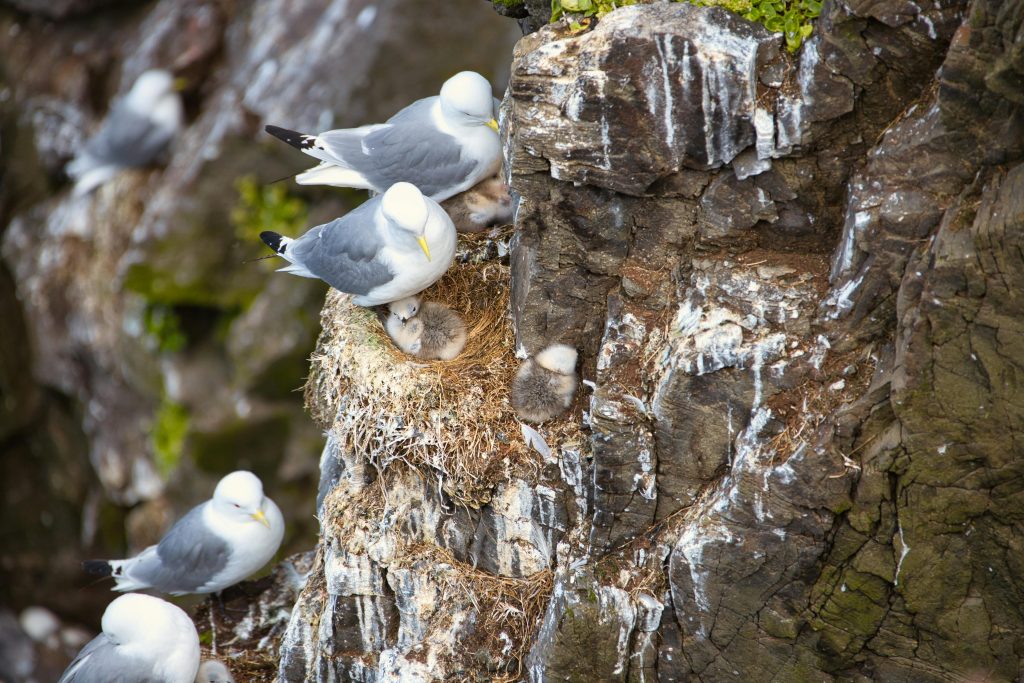
Climate change is causing species to move north in UK waters. Warm-water species are moving into British waters, while cold-water species are moving north. This changes the balance in traditional fishing areas.
Scientists are tracking these changes through biodiversity monitoring. They use traditional methods and new environmental DNA sampling. This gives deep insights into the health of different habitats.
The Importance of Marine Protected Areas
The UK has expanded its Marine Protected Areas (MPAs) to cover about 40% of its waters. This is a big step in marine conservation. It aims to protect habitats and support sustainable use.
Studies show MPAs are working well. Places like Lundy Island and Lyme Bay have more species and biomass. This is good news for sensitive habitats like maerl beds and horse mussel reefs.
But, protection levels vary in MPAs. Some areas have no fishing, while others allow certain activities. This variation helps scientists understand what works best for conservation.
Managing MPAs is a balance. It must protect nature while helping coastal communities. Working with local people is key to success.
Case Studies from Different Regions
The Celtic Sea shows how conservation can work. Fishing closures have helped fish stocks recover. Scientists and fishermen work together to understand the ecosystem.
In the North Sea, new ways to manage coastal ecosystems have been tried. Buffer zones protect sensitive areas, and artificial structures help biodiversity. Monitoring shows how well these efforts are working.
Scottish waters, like the Hebrides and Orkney, have community-led conservation. Kelp forests and seagrass meadows are being managed. This helps the environment and supports local fishing.
Each region has its own approach to marine conservation. The UK’s waters are different, so management must be flexible. This ensures conservation works in each area.
The future of UK marine ecosystems is bright. With more biodiversity monitoring, better protection, and community involvement, the UK can thrive. It can develop sustainable relationships with its seas.
Fisheries Management and Sustainable Practices
Recent changes in fisheries governance show a big push for balancing economic needs with environmental goals. The global fishing industry is seeing big policy reforms. These reforms focus on long-term sustainability over quick gains.
These changes are reshaping how we manage and harvest marine resources. They have big implications for marine ecosystems and the people who depend on them.
Updates on Global Fisheries Policies
International fisheries governance has changed a lot in recent years. There’s a big shift towards managing ecosystems as a whole. The United Nations Sustainable Development Goals, like SDG 14 (Life Below Water), guide policies worldwide.
The Food and Agriculture Organization’s Code of Conduct for Responsible Fisheries is key. It influences national policies and regional management organisations. Recent updates have made rules stronger for small-scale fisheries protection and considering climate change in plans.
Rules are now based on science to set catch limits. This is a big change from the past, when the focus was on getting as much as possible.
Keeping to the rules is a big challenge. But, new tech like satellite monitoring and vessel tracking systems are helping. Port state measures have also been very effective in stopping illegal fishing.
Case Studies on Sustainable Fishing Practices
Many fisheries show that making money and protecting the environment can go hand in hand. The Marine Stewardship Council certification has helped many fisheries. They see real environmental benefits and often get better prices.
In the North Sea, cod fisheries have made big changes. They use bigger mesh sizes and escape panels to catch fewer young fish. This, along with protecting where fish spawn, has helped fish stocks recover.
In Southeast Asia, local fishing communities are doing great things. They use old knowledge and new science to manage their fishing. This has led to more fish and healthier oceans.
- The Lofoten skrei cod fishery in Norway shows traditional methods can be good for the environment and the economy.
- Spencer Gulf prawn fishery in Australia uses digital mapping for real-time management.
- Lobster trap fisheries in Maine protect breeding females with v-notch conservation measures.
- Artisanal pole-and-line tuna fisheries in the Maldives have almost no bycatch.
- UK scallop fisheries are switching to dive collection to reduce seabed damage.
The Role of Aquaculture in Food Security
As wild fisheries face challenges, aquaculture’s role in feeding the world is growing. It now provides more than half of all seafood. Growth is fast in Asia and is becoming more important in Europe.
New tech is making fish farming better for the environment. Recirculating aquaculture systems (RAS) use less water and reduce pollution. They also let farming happen in places that were not suitable before.
Integrating different species in aquaculture is another big step forward. For example, growing fish with seaweed and shellfish. This uses waste from one species as food for others, cutting pollution and boosting productivity.
Coming up with new feed sources is a big challenge for aquaculture. But, new proteins from insects, single-cell proteins, and plant-based feeds are helping. They offer better nutrition and reduce the need for wild-caught fish.
Aquaculture is key for food security in coastal communities and developing nations. Small-scale farms can provide high-quality protein with low investment. They create jobs and help local nutrition. As climate change gets worse, aquaculture may be more resilient than wild fishing.
Innovations in Marine Technology
Advanced engineering and digital technologies are changing ocean research and monitoring. These new tools help us study marine life with great precision. They allow scientists to explore the ocean’s depths and coastlines like never before.
Advancements in Oceanographic Research Equipment
New equipment is making ocean research better. Autonomous underwater vehicles (AUVs) can now explore deeper and longer. They can go on missions for weeks, gathering data without humans.
Another big step is combining sensors into one system. These systems measure many things at once. This gives scientists a full picture of marine life and its environment.

Equipment is getting smaller and more accessible. Devices that used to need big ships can now be used from smaller boats or even by one person. This makes research more open to everyone, not just big institutions.
The Use of Drones in Marine Monitoring
Drone technology is changing how we monitor the sea. Fixed-wing aerial drones can quickly map coastlines. They do this faster than old methods.
Underwater drones are also key for scientists. They can do surveys together, without harming the sea. They’re great for exploring dangerous places.
Drone tech helped find new sea creatures at the Nazca Ridge. This shows how new tech helps us learn more about the sea.
Artificial Intelligence in Marine Studies
More data means we need better ways to understand it. Artificial intelligence (AI) helps by making sense of it all. AI can spot and count sea creatures fast and accurately.
AI also helps predict how the sea will change. This is useful for planning how to protect it. It helps us make better decisions for the sea.
AI and new research tools work together well. For example, AUVs with AI can change their plans as they go. This makes their missions more effective.
These new technologies give us a better way to understand the sea. As they get better, we’ll learn even more about the ocean. This will help us protect it better.
Collaborations and Partnerships in Marine Ecology
In December 2024, we’ve seen big steps forward in working together to protect our oceans. The big problems facing our seas need everyone’s help. By teaming up, we’re finding new ways to tackle these issues and learning a lot from each other.
Global Initiatives for Marine Conservation
The UN Decade of Ocean Science for Sustainable Development is leading the way for global teamwork. It brings together research from all over the world to tackle big marine conservation challenges. This year, it’s helped share data and start new research projects.
Regional seas conventions are also helping countries work together. They focus on stopping pollution, saving marine life, and managing resources. For example, the North-East Atlantic Marine Protected Areas Network grew by 15% this year thanks to teamwork.
A great example of working together is a taxonomic project. A team of 25 experts from ten countries found and named 11 new marine species in the deep Atlantic. This shows how working together can speed up scientific discoveries and help us understand marine life better.
But, there are challenges in making international agreements work. Different countries have different needs. Yet, new ways of governing are emerging that balance local needs with global goals. The Baltic Sea Action Plan shows how regional plans can make global goals real.
Local Partnerships Enhancing Marine Research
Local partnerships are also making a big difference. They bring together universities, conservation groups, and communities for specific projects. The Solent Oyster Restoration Project in southern England is a great example, with universities, fishing communities, and conservation groups working together.
University and industry partnerships are driving new technologies for monitoring the sea. In 2024, they’ve developed:
- Advanced underwater vehicles for exploring the deep sea
- New ways to sample environmental DNA
- Systems for monitoring the coast using satellites
- AI tools for identifying species
Citizen science projects are also growing, collecting more data and engaging the public. The UK Seagrass Monitoring Network has over 2,000 volunteers. These projects help gather important data and build support for protecting the environment.
Local partnerships are testing new ways to manage marine areas. The Lyme Bay Fisheries and Conservation Reserve has shown how to work together. Its methods are now being used in marine protected areas across the UK and beyond.
The Impact of Collaborative Efforts
Studies show that working together can lead to better results than going it alone. An analysis of 50 marine conservation projects found that those with three or more groups were 64% more likely to see positive changes over five years.
What makes marine collaborations successful? Key factors include:
- Clear goals from the start
- Open decision-making
- Fair sharing of benefits
- Flexible management
- Steady funding
The Marine Conservation Society’s work with offshore wind developers shows how industry and conservation can benefit each other. This partnership has set up ways to monitor the sea that meet research and regulatory needs, helping everyone involved.
Despite progress, there are challenges in measuring the long-term effects of working together. We’re working on standard ways to track progress, but the evidence shows that teamwork is key to solving marine ecosystem problems.
Community Engagement in Marine Conservation
In the UK and beyond, community efforts are changing how we protect our oceans. Local groups are key in tackling big environmental problems. They bring together knowledge, passion, and resources to find lasting solutions for our seas.
Educational Programs and their Impact
Marine education is making a big difference. Schools in the UK are teaching kids about ocean conservation. This helps young people grow up caring for the environment.
Technology is making learning about the sea exciting. Virtual reality experiences let students explore the ocean from their classrooms. Games make learning about complex topics fun and engaging.
Now, we can measure how well education works. We look at how it changes behaviour. This helps teachers make their lessons even better at teaching us to care for the sea.
Local Initiatives Making a Difference
Coastal communities are leading the way in conservation. In seaside towns, people are cleaning beaches and reducing plastic pollution. These efforts improve the sea’s health and teach others about pollution.
In Scotland, fishing communities are working with scientists to restore seagrass meadows. This not only helps fish but also absorbs carbon dioxide. It shows how local knowledge can help protect the sea.
Sustainable seafood initiatives are also making a difference. They connect people with local, eco-friendly fishing. This builds community and promotes fishing that protects the sea for the future.
Success in these efforts comes from strong local leaders, scientific support, and community involvement. With these things, even with little money, communities can achieve a lot.
The Role of Citizen Science in Marine Ecology
Citizen science has grown from simple data collection to real research partnerships. New technology has made the data collected by volunteers just as good as professional research. This includes apps, underwater sensors, and better data systems.
Programmes like the Great British Beach Clean show how volunteers can make a big impact. Thousands of people help track litter, giving valuable data for policy changes.
Citizen scientists are also key in tracking changes in marine life. In Cornwall, divers help scientists understand how the sea is changing. This work is vital for understanding our oceans.
These efforts do more than just collect data. They inspire people to care about the sea. Citizen scientists often become conservation advocates in their communities. This helps get more people involved in protecting our oceans.
Future Directions in Marine Ecology
As we wrap up this Marine Ecology News Digest December 2024, we see a turning point. The next years will be key in how we protect our oceans for future generations.
Priorities for Upcoming Research
The future of ocean research is about filling big gaps. It will use genomics, ecosystem models, and long-term studies. This will help us grasp how ecosystems react to stressors.
Studying how species adapt and when ecosystems might collapse is urgent. This is because climate change is moving fast.
Anticipated Challenges in Marine Conservation
Marine conservation is facing big challenges. Climate change is moving too fast for our current plans. We need new, active ways to adapt.
There’s a big push to use more of the sea while keeping it healthy. But, finding money to do this is hard, even in poor coastal areas.
The Future of Marine Policy Frameworks
Policy is changing with new science and changing public views. International rules for the open sea could help protect more of the ocean. But, making these rules work is hard.
For marine conservation to succeed, we need to think holistically. We must see the links between nature, people, and the economy. The marine ecology community must work together to face these challenges.

